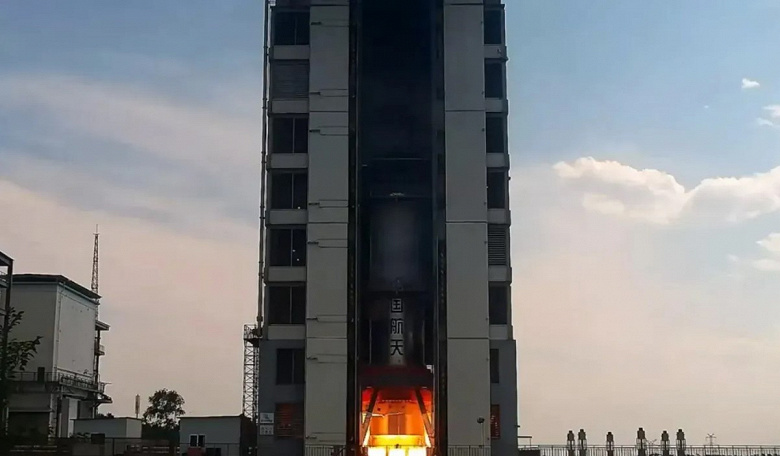Reusable first stage – key innovation in rocket design
China's top space contractor – China Aerospace Science and Technology Corporation (CASC) – conducted successful static fire tests of the first stage of the launch vehicle designed to deliver taikoonauts to the Moon.
The test took place on June 14 in the Fengtai district in Beijing. The CASC Institute, responsible for rocket development, launched the test prototype of the first stage of the new Long March 10 launch vehicle. According to a message from the China Academy of Launch Vehicle Technology (CALT) published on their WeChat channel, the test phase began normally, the engines were operating stably and were successfully turned off according to schedule.
The successful fire test of the first stage of the Long March 10 rocket is an important step towards the implementation of China's manned lunar mission program, which aims to land on the surface of the Earth's satellite by 2030. This is four years earlier than NASA plans to conduct its Artemis 3 mission. on the return of people to the Moon.
On a test bench with a diameter of 5 meters, three YF-100K liquid rocket engines running on kerosene and liquid oxygen were installed. Complete first stage of the rocket «Long March 10» will be equipped with seven such engines. Two similar side booster stages will also be attached to the rocket's central stage.
Limiting the number of engines on the test stand to three was due to the features and capacity of the stand itself. However, the simultaneous firing of three engines was considered successful.
«This test is a comprehensive test of our first stage. It was a complete success, laying a solid foundation for our subsequent research and development, as well as the implementation of the manned lunar exploration program, – commented CASC engineer Xu Hongping in an interview with CCTV. The tests also confirmed the correctness of the technical solutions allowing to reduce the weight of the rocket, as well as the operability of fueling systems, control and other key components.
According to the plan for further development of the Long March 10 rocket, another test of the first stage will be conducted in the near future to check other modes of its operation, the China Manned Space Exploration Agency (CMSEO) reported.
The launch vehicle will be used by China to carry taikonauts to the moon and back. For this purpose, two rocket launches are planned. The first launch will place the manned spacecraft «Mengzhou» into lunar orbit. with the crew. The second launch will send the Lanyue lander to the Moon. The spacecraft and lander will meet in lunar orbit. The two astronauts will descend to the lunar surface and spend six hours there before returning to the orbiter and landing on Earth.
«The development of a new generation of manned rockets can significantly expand our country's capabilities to enter space and help land on the Moon. In addition, some of the technological breakthroughs could stimulate the development of our entire aerospace industry, – noted CASC engineer Xu Hongping.
Along with the lunar program, the Long March 10 rocket will also be used to deliver crew and cargo to the Chinese orbital station Tiangong. This version of the rocket will have a length of 67 meters and a reusable first stage. At launch, the mass of the rocket will be 740 tons, and the thrust – about 892 tons. The payload to low Earth orbit must be at least 14 tons.
The YF-100K rocket engines that power the Long March 10 are an upgraded version of China's popular YF-100 engines, used on new generations of Chinese launch vehicles.
New launch complexes for this rocket are already being built at the Wenchang Cosmodrome on Hainan Island.
The landing of Chinese astronauts on the Moon is part of larger plans to create a robotic, and eventually habitable, lunar base as part of the International Lunar Research Station (ILRS). Last week, China selected a new group of participants to train for future lunar missions.

